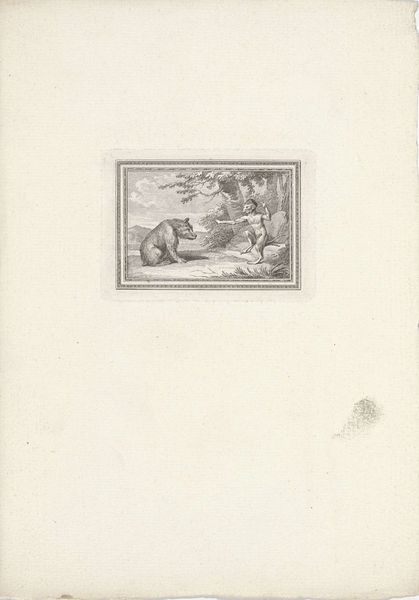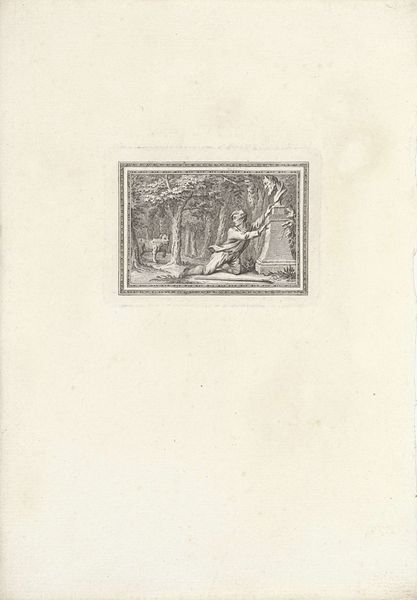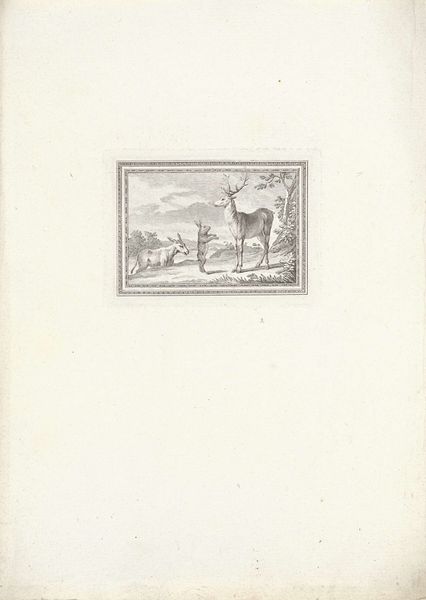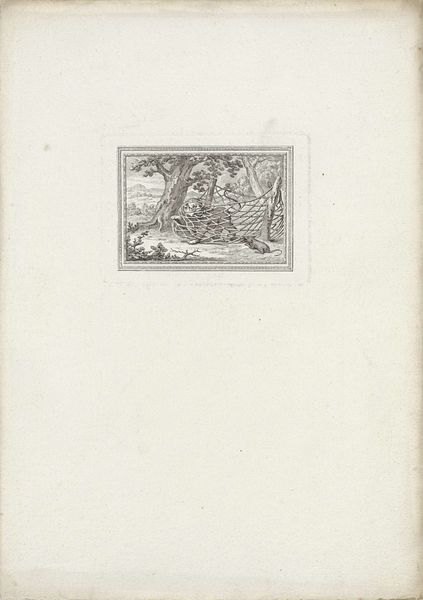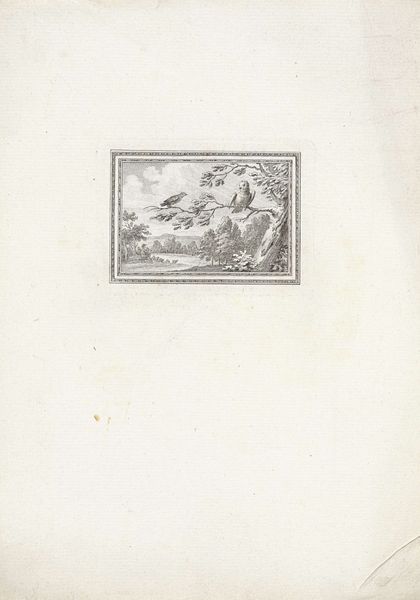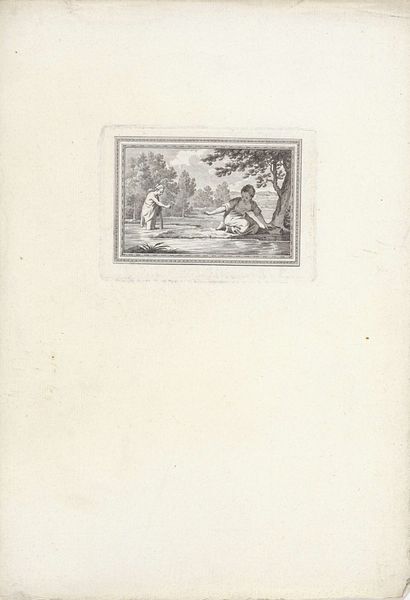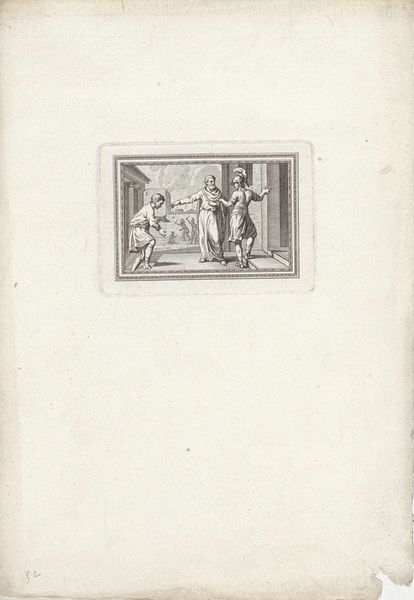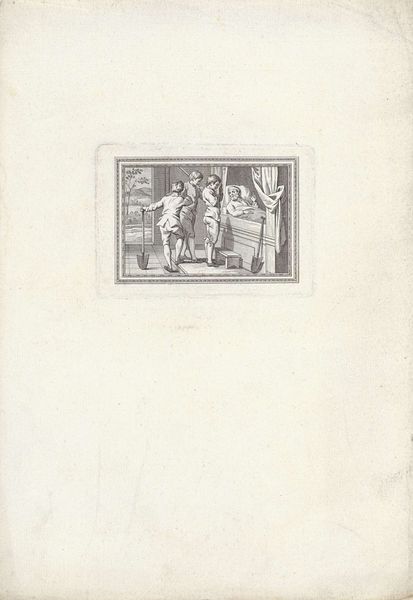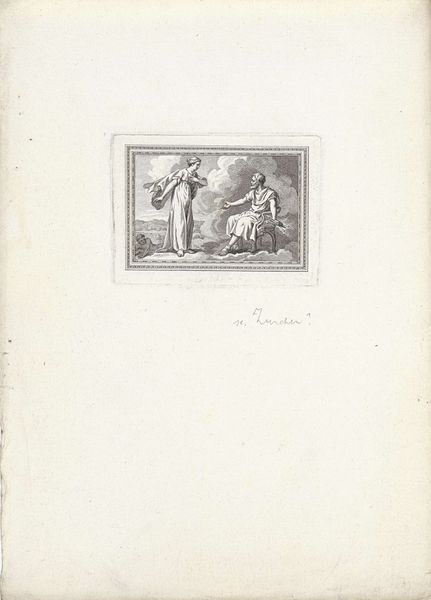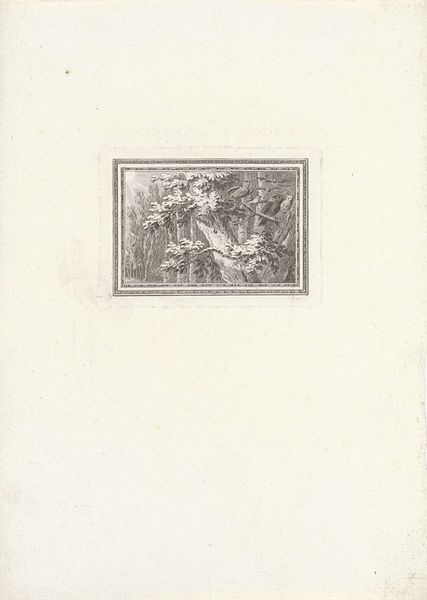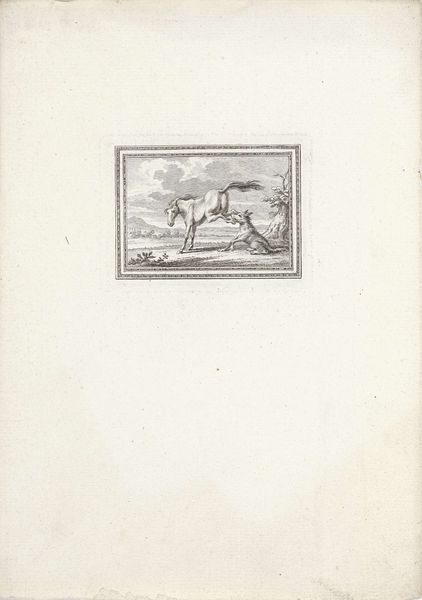
print, engraving
#
neoclacissism
#
narrative-art
# print
#
old engraving style
#
figuration
#
line
#
history-painting
#
engraving
Dimensions: height 67 mm, width 96 mm
Copyright: Rijks Museum: Open Domain
Curator: Looking at "Het hart en het vernuft" – "The Heart and the Ingenuity" – an engraving made in 1792 by Reinier Vinkeles, housed here at the Rijksmuseum, what are your initial thoughts? Editor: It's intriguing, almost like a tableau vivant. The figures are posed deliberately. I notice how the light catches on the blank tablet and tools, it feels like an emphasis on craftsmanship and intellect. Curator: The print's Neoclassical style certainly reinforces that deliberate composure. We're seeing an allegory here, typical of the period. On one side is the figure representing ingenuity – notice his gestures – rejecting the influence of passion, represented by Cupid with a discarded bow and arrows. Editor: Ah, so ingenuity triumphs! Interesting that the discarded tools are right there. Is there some commentary about the changing modes of art-making itself, beyond the philosophical debate of reason over passion? I wonder about the printing process itself—the labor, the plates, the very materiality of disseminating ideas at this time. Curator: Absolutely. It's worth noting how the engraving, as a readily reproducible medium, helped spread Enlightenment ideals. The emphasis on line work and clarity over painterly effects, while adhering to Neoclassical conventions, reflects a belief in rationalism extending to art's accessibility. And if we look closely at the figures themselves, particularly Cupid, what assumptions about class, power, and innocence are made visible through their depiction? Editor: It's all so...contained, so precisely rendered. It does speak volumes about the values and anxieties of its time, laid bare in the materials used and discarded. Perhaps it mirrors anxieties regarding the labor and knowledge used to create such pieces, while portraying a scene of progress at the cost of emotion. Curator: And the print becomes not just an illustration of an ideal but a material object embodying that ideal, for its moment in time. Editor: It certainly provides an artifact through which we can study the value placed upon thought. Curator: Indeed, allowing for an open, intellectual journey through 1792.
Comments
No comments
Be the first to comment and join the conversation on the ultimate creative platform.

